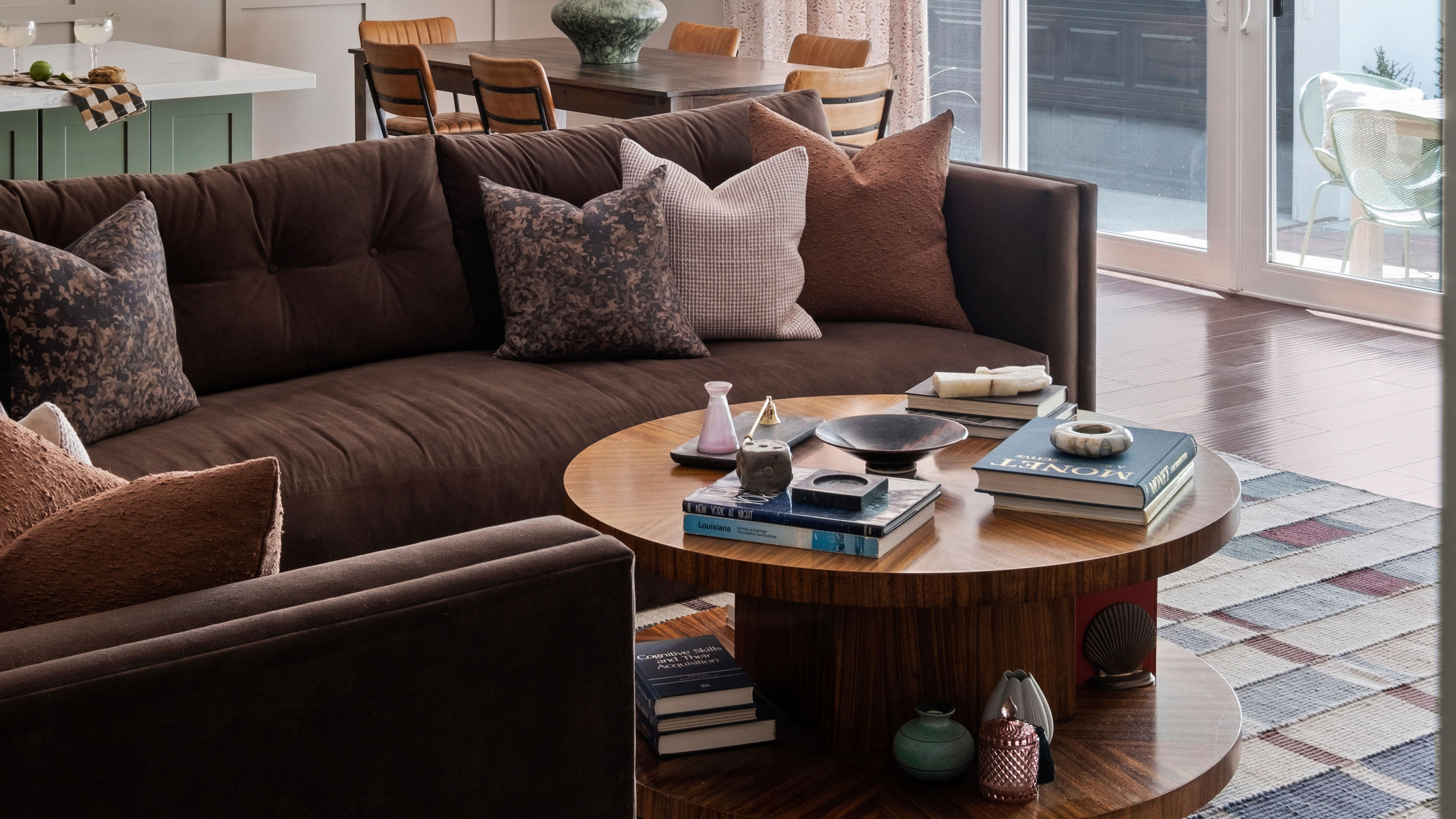
I'll say it — throw pillows are the make or break of a sofa. So often, bad styling brings down what would otherwise be an excellent couch — on the other hand, get it right and a sofa that feels ordinary can be elevated to something more special.
There are, in reality, so many options as for how to arrange throw pillows on a couch that no two living room sofa ideas really ever look the same. Whether that's down to the pillows you choose, or how you combine them, it's one of those decorating jobs that brings your sense of style and personality home — whether for better or for worse.
As an interior stylist, I've dressed more than my fair share of couches in my time, so with the lessons I've learned along the way, and a little bit of my own style advice and help from designers, I've pulled together my top tips for styling throw pillows on one. From how to think about what to choose to the layouts that just work well, these are my sofa-styling rules (and when to break them).
How many throw pillows do I need?
So you've invested in the best sofa, but now comes time to dress it — so exactly how many throw pillows do you need for a couch?
"The number of throw pillows on a couch is subjective," says interior designer Marie Flanigan. "However, you’ll typically find at least two pillows on each couch I install in a project. At the minimum, there should be two pillows on one corner of a couch."
"If you’re more of a maximalist or want to achieve more symmetry, go by the rule of thumb that each corner of the couch or sectional should be dressed with a pillow," she adds. Dressing the couch with an odd number of pillows can also create a visually appealing, fresh look. For a smaller sofa, three pillows works well.
For a two-seater couch: Two-three pillows
For a three-seater couch: Three-five pillows
For a sectional couch: Five-six pillows
Sizes and shapes
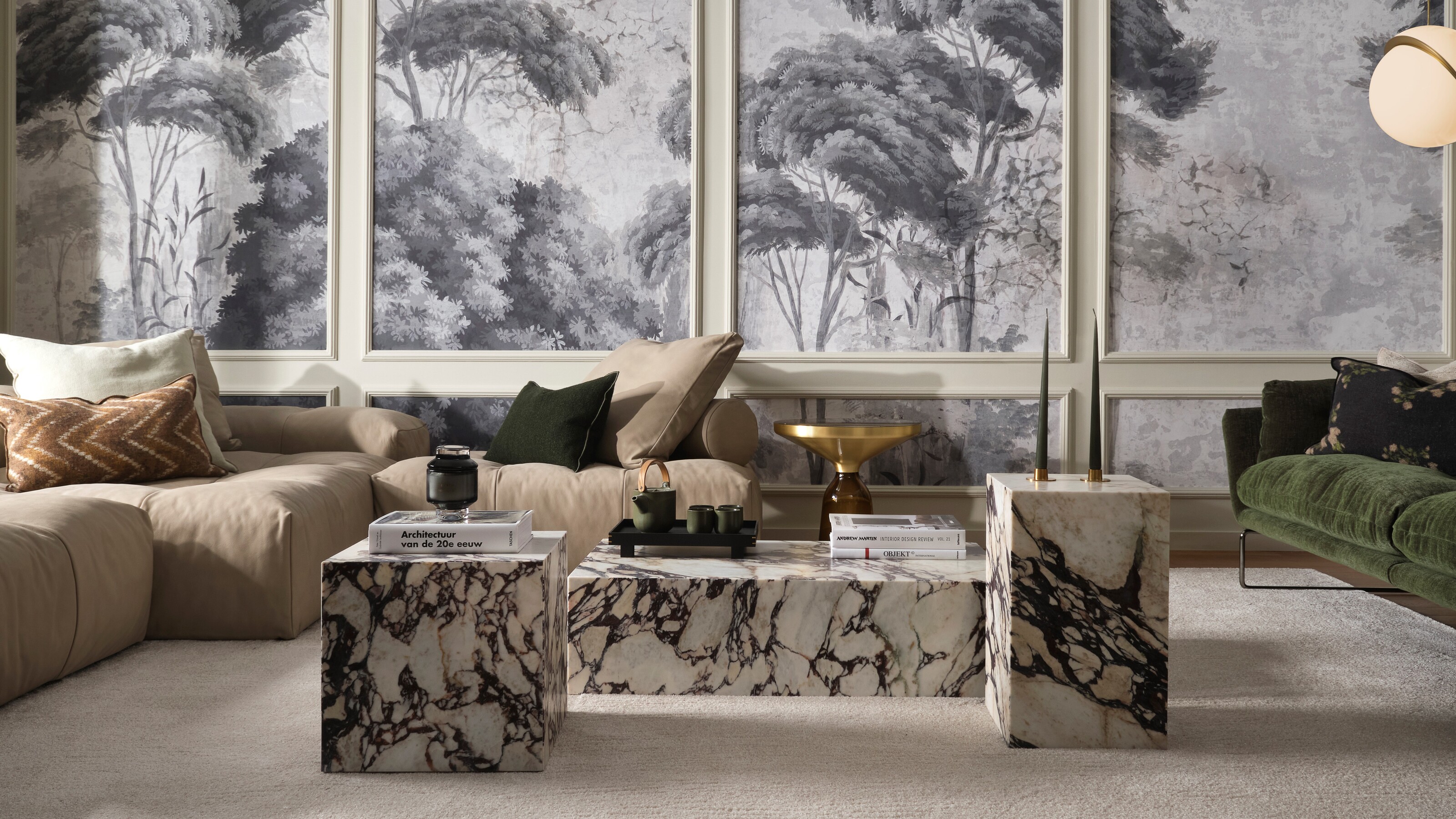
Whether you're into formal layering or a more eclectic sofa-scape, varying throw pillow sizes is something that adds more interest and variety to your couch. It's not a total must — all of these sofa styling rules are made to be broken to some degree — but it's a good place to start for an easy way to style your living room's centerpiece.
For the more relaxed, eclectic look, you'll want to vary size and shape more dramatically than the more formal styling of both traditional and more minimalist spaces.
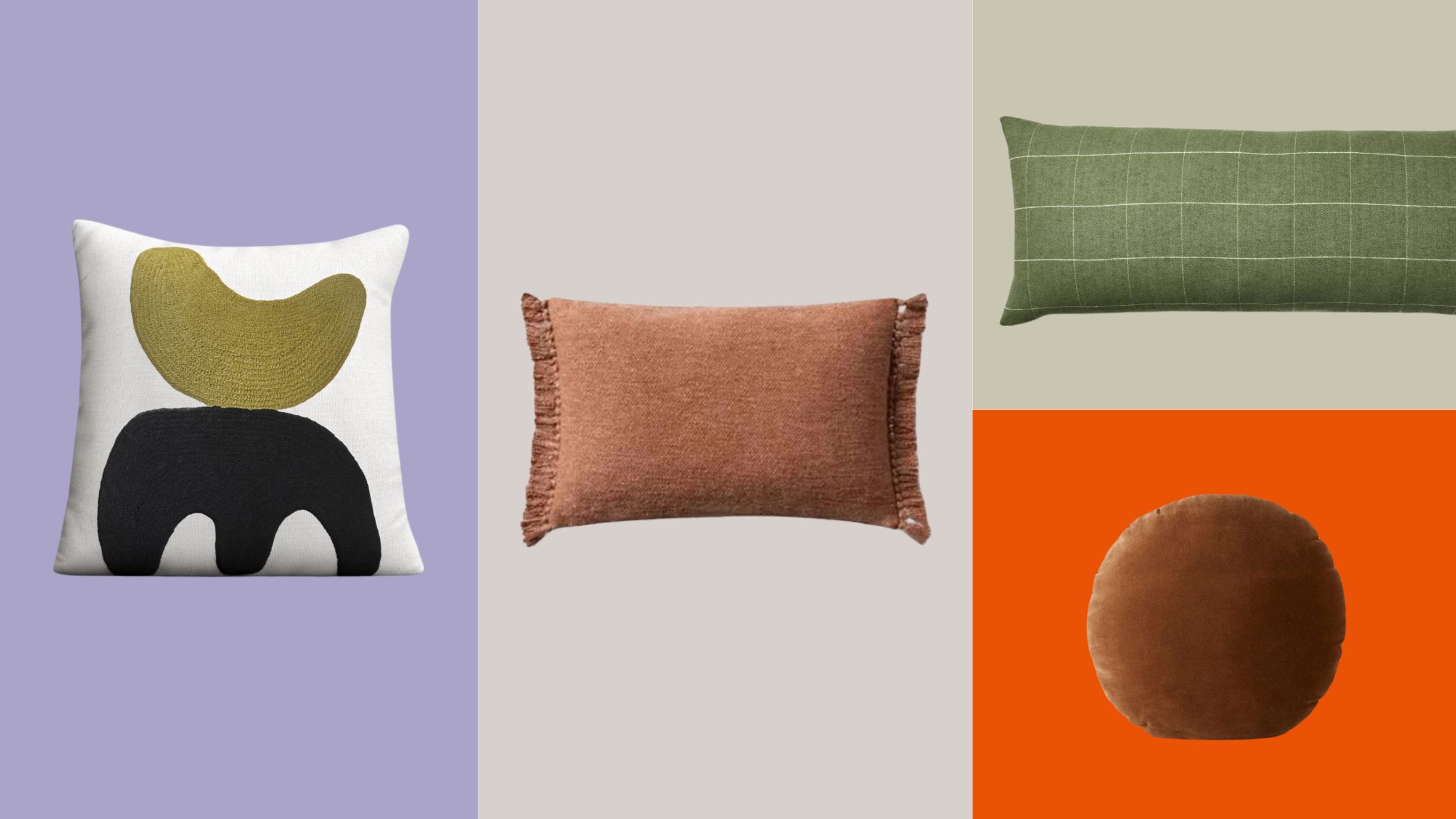
Above, this Jason Wu throw pillow from Wayfair is our standard square pillow. Square pillows come in all kinds of sizes, but the most common, standard is 18 x 18 inches (though personally, and depending on the type of sofa, a 20-inch pillow feels a little more generous).
The Magnolia Home rust pillow, also from Wayfair, in the center is our standard lumbar pillow. Lumbar pillows tend to be more towards 12-14 inches in height, and various lengths. The Target windowpane lumbar in the top right, for example, is a longer design, so can span more of a sofa, or bed, with its 36-inch length. In place of lumbar pillows, you may also see bolster pillows used.
Then we have our wildcards — the interestingly shaped pillows that break up the linear nature of standard throw pillows. Whether used alone or in the mix with square and rectangular pillows, round pillows such as this velvet rust one from Lulu & Georgia, and even 3D 'boba' pillows, bring curves that soften a seating area and can make them feel more modern.
Color, Pattern and Texture
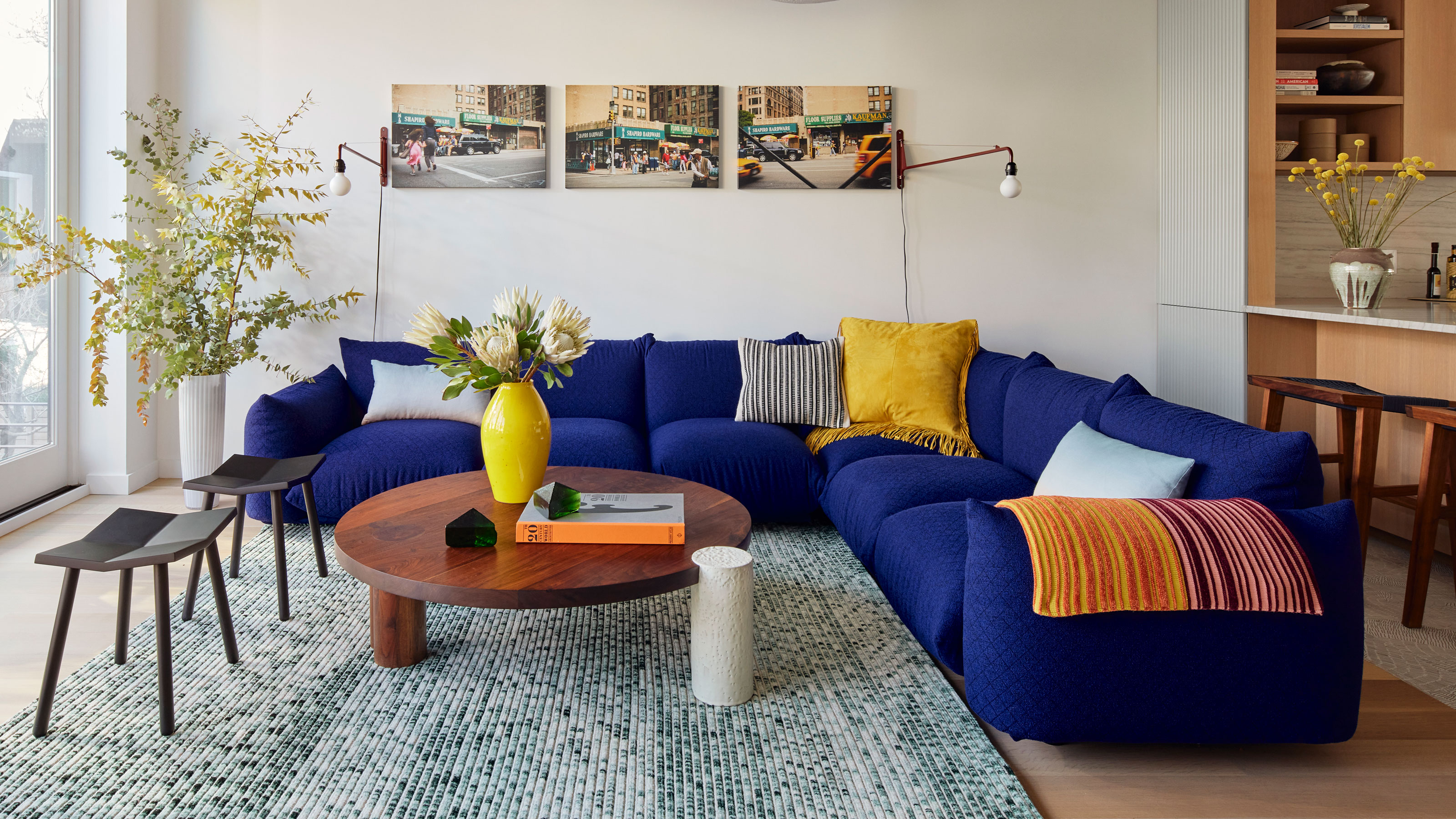
How bold you want to be with color depends entirely on your interior scheme, but regardless of how maximalist you are, throwing a rainbow at your sofa isn't going to make it feel well-curated. To get the right balance, turning to the 60-30-10 rule is a good idea. This color rule gives you a good ratio for a balanced color palette, whether it's across the entire room, your entire sofa, or just the throw pillows and blankets. Basically, one color should be weighted at 60%, one at 30% and one at 10% — and I'd throw in there that one of those colors should be a neutral too, to keep things looking sane.
A neutral sofa can take more colors that a bold colored sofa, too. "If your sofa is already a statement color, just choose colors that enhance the other tones throughout the room," Marie advises. "Use these pillows to make a cohesive statement that speaks to the room’s personality."
The rule of three is also a really helpful tool for those looking to introduce pattern and texture to a sofa — and I group these together as they can often be interchangeable in use. Not everyone necessarily wants a cacophony of prints on their sofa, but a series of plain, differently colored throw pillows in one texture will feel one-note and, to be honest, a little bit cheap. Mixing texture and pattern, whether subtly or with maximalist flair, is an easy way to create a cohesively styled sofa.
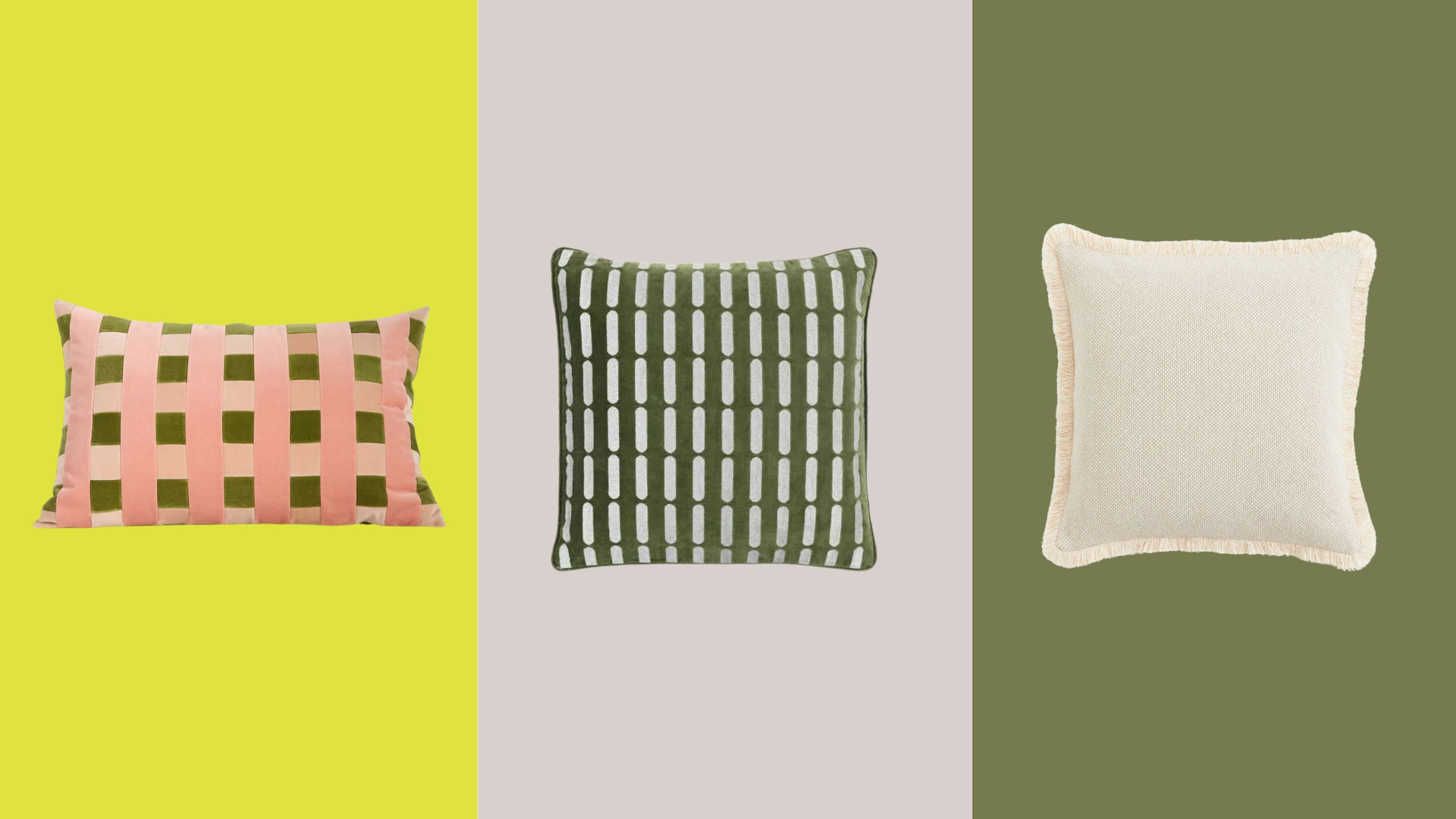
The trick to styling throw pillows on a couch when it comes to pattern is in identifying what clan your pillow belongs to: Is it a large print, small print, or plain?
In the example above, the pink and green checkerboard pillow from Anthropologie is our largest print, the green pill-patterned pillow from Wayfair is our mid-to-small print, and this textured fringe pillow from H&M is our plain. Using one of each (per vignette of your couch, or scaled up across a larger sofa depending on how many pillows you're using) will help to visually balance your design. This is an easy way to combine them — but, of course, if you're feeling confident, you can break this rule for a bit of a wilder look.
In terms of texture, I'd say it's a good rule of thumb to make sure you have at least one in three throw pillows bringing a visually different appearance to your couch. "I think sticking to two or three different textures that are also complementary is key to creating a beautiful mix," Marie agrees.
You'll notice this example also works with our 60-30-10 color rule: the beige is the largest quantity, roughly our 60%; the olive green, on the two pillows, represents our 30%; while the sole pink on the checkerboard pillow is our 10%.
How do you arrange pillows on a sofa
Following the 1-2-3 method is an easy way to style throw pillows on a couch, and it's an idea that's widely used for most standard sofa pillow arrangements.
Marie Flanigan explains: "First (1), always place your largest pillow toward the back. I love when this pillow is a solid color to set the tone for additional layers," she explains. "Then (2), you can move onto a patterned pillow that’s slightly smaller or a different size. Then (3), add a beautiful accent pillow in front."
If you want to keep things simple and don't want to do the full 1-2-3 method, you can skip a step. Marie says: "I think a solid pillow in the back with a pattern or accent pillow in front is always a winning look."
You can also choose to go vice verse, and have your large pillows at the back patterned, and a plain accent pillow in front.
While there might be endless ways to experiment with throw pillows, these five layout ideas for them are a good place to start — be guided by the type of interiors you're trying to create and play with size and shape until your design starts to feel natural.
I've styled these sofas in neutral shades, as someone with a general fondness for beige shades, but I also hope they're neutral enough to help you be able to project your own style onto these sofa set-ups.
1. The Minimalist
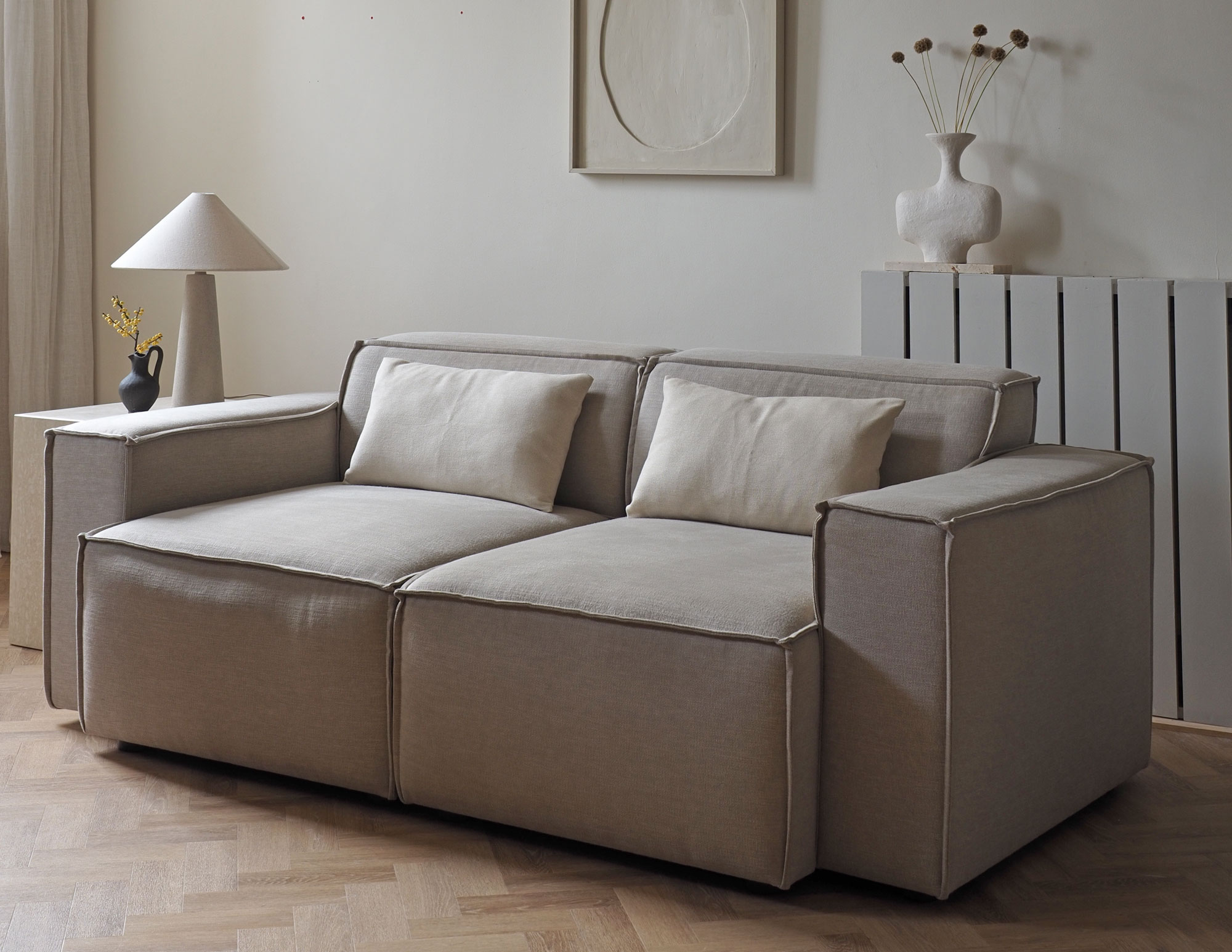
With all this talk of mixing up color, shape, pattern, and texture, let's start with a curveball — the minimalist sofa. We're seeing lots of cool interior schemes using one-color pillows that match the sofa — another instance where breaking the 'rules' brings something new to the table.
Whether you stack up matching pillows more informally or want something even more pared back and structured, such as this set-up which uses two simple lumbar pillows on this low-back sofa. I love the idea of the regularity of placing a pillow in the center of individual pieces of a sectional sofa, too.
2. The Mirror Image
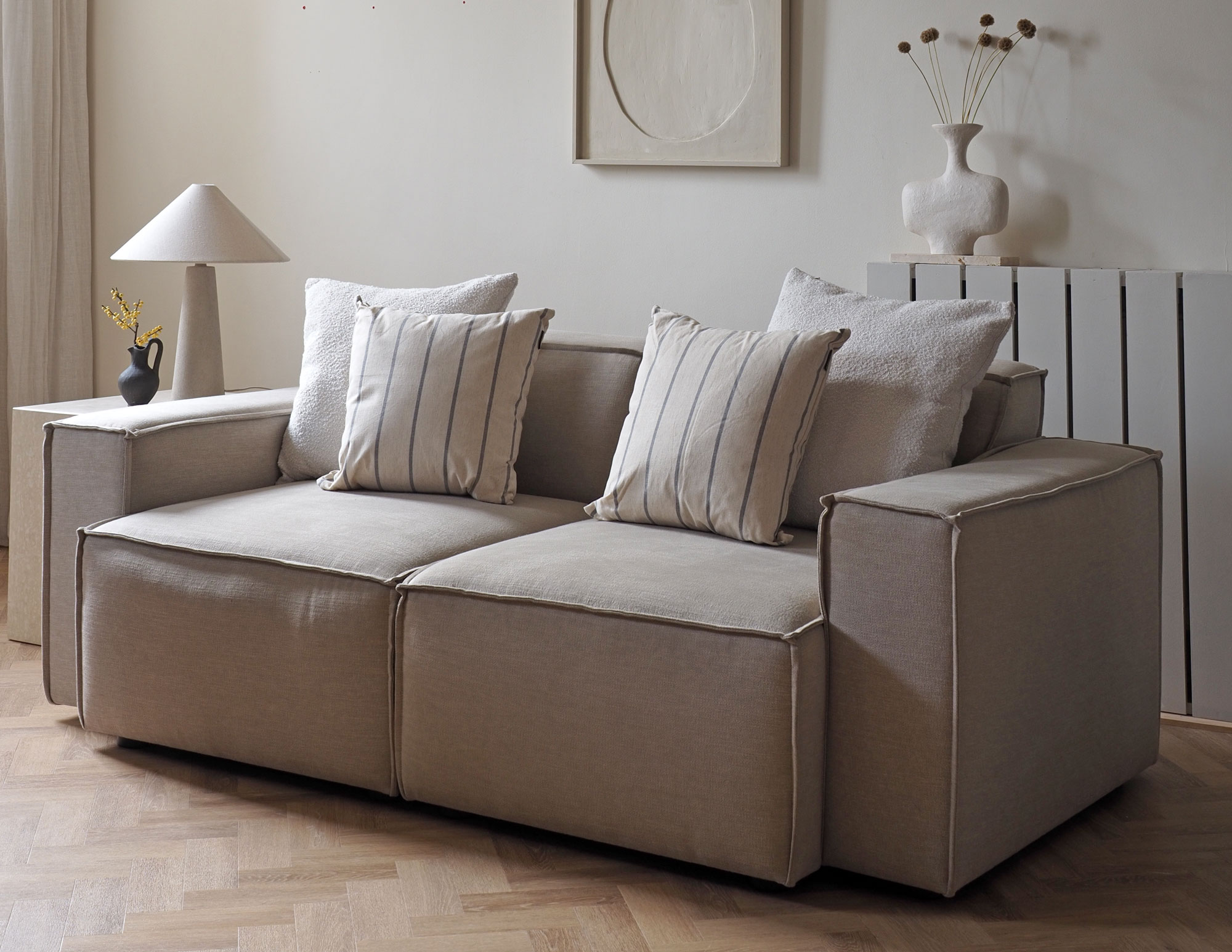
Symmetrical layouts, in general, lean towards more traditional interior styles. They're arguably a little more preppy and expensive-looking, but can make a sofa feel a little more formal. If that's what you're after, then it could be the right choice for creating an elegant living room.
One of the most classic ideas for how to arrange throw pillows on a couch is this simple idea: two pillows on either end of the sofa, gentle overlapping. Karate chopped pillows are optional (but not my favorite).
3. The Offset
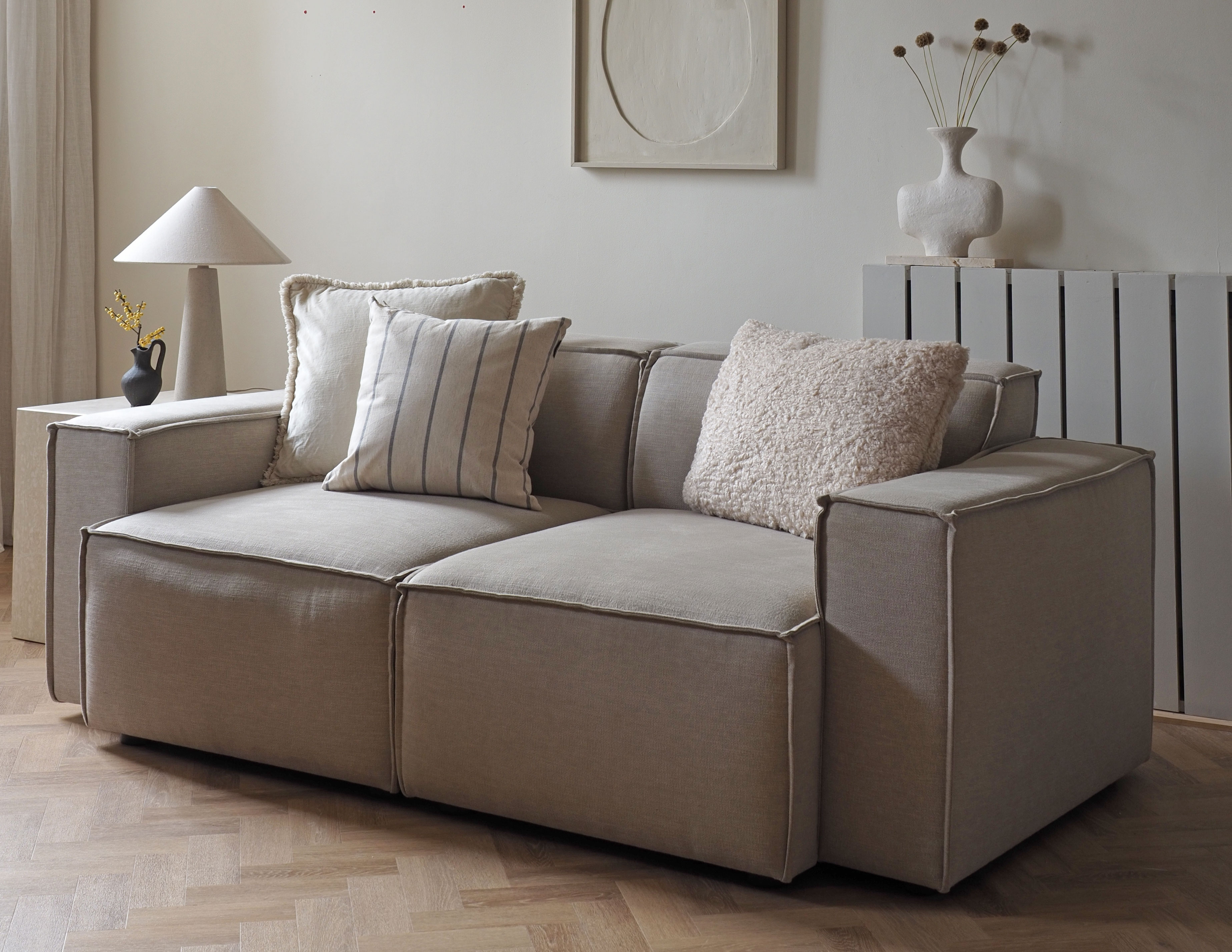
This easy-going offset cushion layout is somewhere in the middle when it comes to formal vs relaxed couch styling. It's not trying too hard, and it's easy to balance.
Follow this exact layout — two square throw pillows on one side, one rectangular or lumbar pillow on the other, and you've got an easy set-up to apply our rules of three to in terms of color, pattern, and texture.
4. The Double-stack
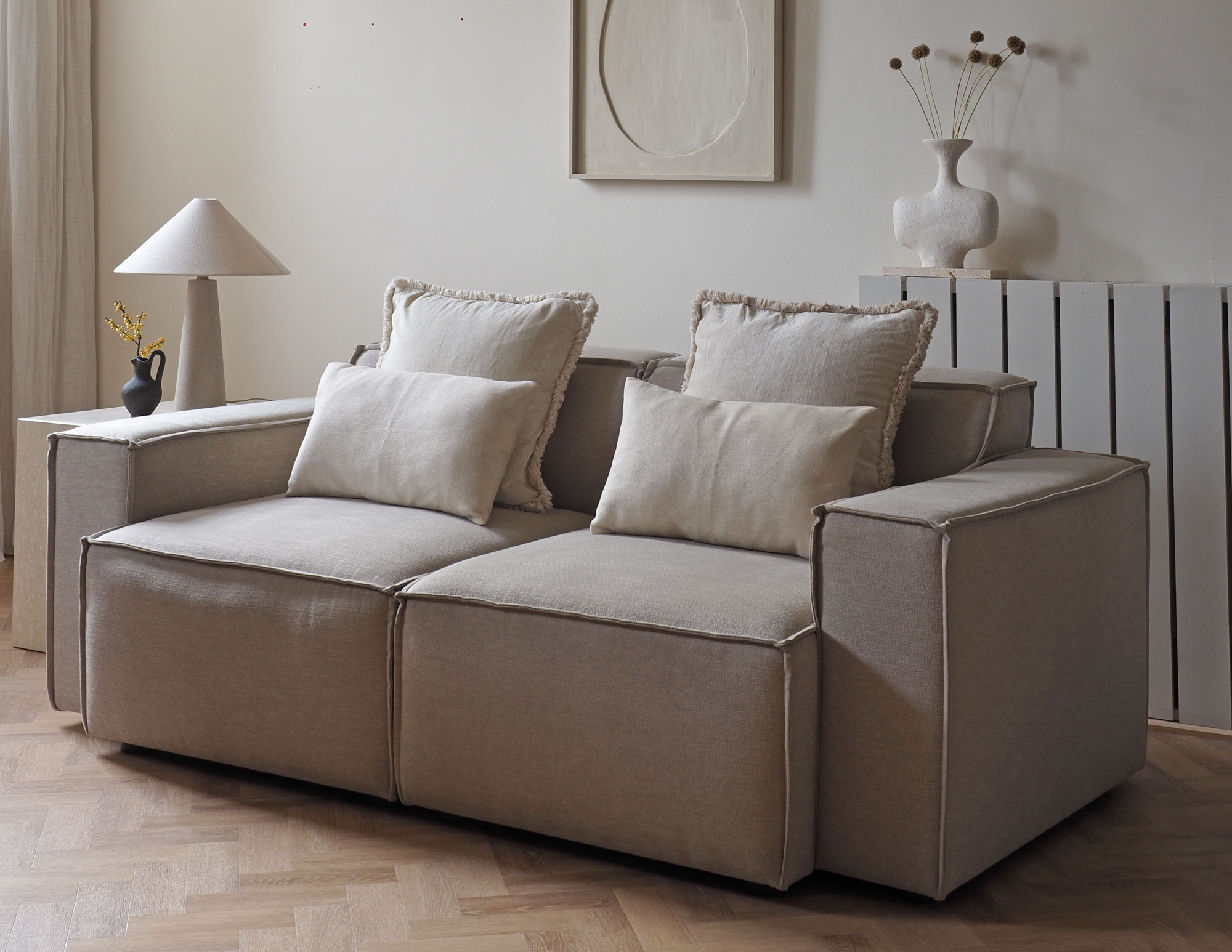
This idea for how to style throw pillows on a couch is perhaps the most formal of the lot, based again on symmetry in interior design, using a larger back pillow stacked with a smaller front pillow. The size and shape of throw pillow you use is up to you — two lumbar pillows would look great, while two square pillows can work if you get the sizes right, or combine the two as above.
In any instance, the front pillow should only be as wide as the back one, and not so small that it feels non-functional as an actual pillow.
5. The Laissez-Faire
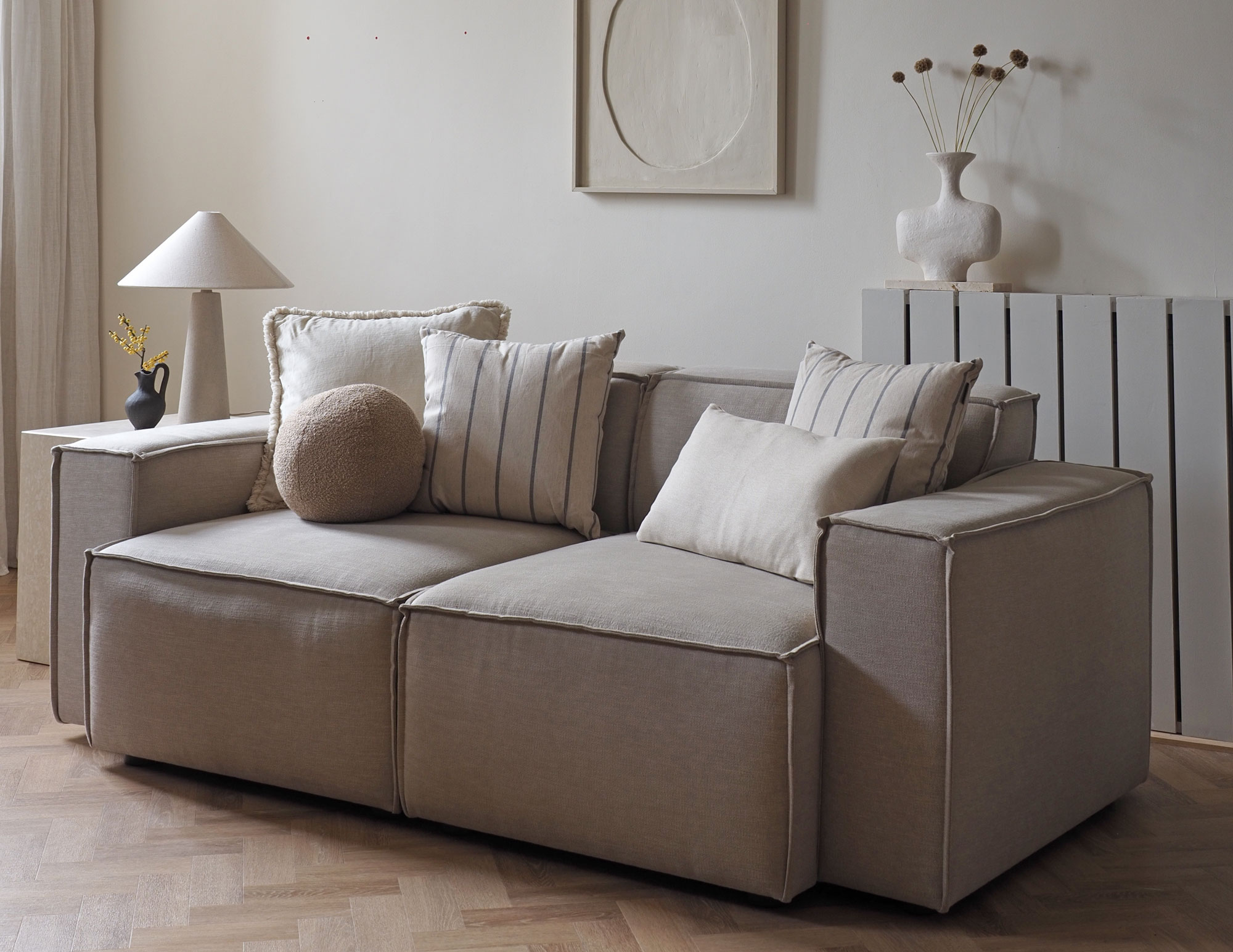
This styling idea is the most laidback, and takes the most feeling out to get right, as there are fewer rules to making it work. However, you're aiming for something that feels less structured and less formulaic by design.
Channel the ideas of the offset layout, above, but while mixing more pattern, texture, and shape into the sofa-scape. Use round throw pillows, lumbar pillows, and square pillows stacked up, and if you're using the same pillow more than once, don't use them symmetrically.
FAQs
What size pillow inserts should I use?
If you're buying throw pillow covers without the inserts, which many retailers offer nowadays, it allows you to size up for fuller, plumper-looking pillows. The general rule of thumb is to pick the standard 'size up' from the pillow you're filling — so for an 18 x 18-inch pillow, a 20-inch insert, like this one from Walmart, is your best bet, and so on.







